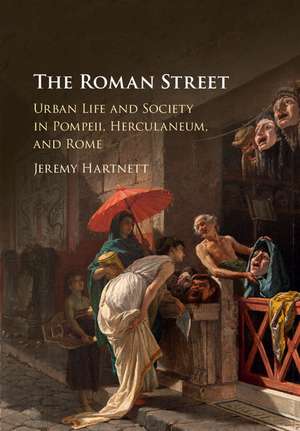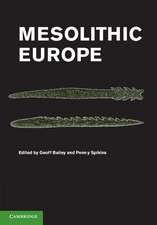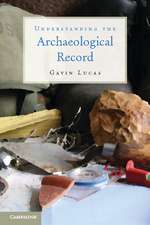The Roman Street: Urban Life and Society in Pompeii, Herculaneum, and Rome
Autor Jeremy Hartnetten Limba Engleză Hardback – 8 mai 2017
| Toate formatele și edițiile | Preț | Express |
|---|---|---|
| Paperback (1) | 276.77 lei 43-57 zile | |
| Cambridge University Press – 25 mar 2020 | 276.77 lei 43-57 zile | |
| Hardback (1) | 767.11 lei 43-57 zile | |
| Cambridge University Press – 8 mai 2017 | 767.11 lei 43-57 zile |
Preț: 767.11 lei
Preț vechi: 891.99 lei
-14% Nou
Puncte Express: 1151
Preț estimativ în valută:
146.79€ • 153.64$ • 122.17£
146.79€ • 153.64$ • 122.17£
Carte tipărită la comandă
Livrare economică 31 martie-14 aprilie
Preluare comenzi: 021 569.72.76
Specificații
ISBN-13: 9781107105706
ISBN-10: 1107105706
Pagini: 380
Ilustrații: 93 b/w illus. 9 colour illus. 7 tables
Dimensiuni: 185 x 260 x 20 mm
Greutate: 0.94 kg
Editura: Cambridge University Press
Colecția Cambridge University Press
Locul publicării:New York, United States
ISBN-10: 1107105706
Pagini: 380
Ilustrații: 93 b/w illus. 9 colour illus. 7 tables
Dimensiuni: 185 x 260 x 20 mm
Greutate: 0.94 kg
Editura: Cambridge University Press
Colecția Cambridge University Press
Locul publicării:New York, United States
Cuprins
Introduction; Part I. Repopulating the Street: 1. Street forms, street movements; 2. Life in the street; 3. The street's social environment; Part II. The Street and its Architectural Border: 4. Sidewalks under siege: houses, owners, and urban context; 5. House facades and the architectural language of self-presentation; 6. The 'in' and the 'out': streetside benches and urban society; Part III. The Street in Microcosm: 7. On the edge of the civic: a Herculaneum street; 8. A contentious commercial street in Pompeii; Epilogue.
Recenzii
'Focusing especially on evidence from Pompeii, Herculaneum, and Rome, Hartnett brings Roman streets to life, weaving together information from roadbeds, street monuments, and building facades with historical and literary descriptions, inscriptions, and representations in art. This topic is rarely tackled, says Hartnett, because of the reliance on birds-eye plans and a focus on grand public spaces. His book is divided into an introduction and three parts of multiple chapters: the activities of the street itself - traffic, social interaction, and self-display; the scale and frame of the street, including facades, sidewalks, and benches; and case studies of two specific streets, one in Pompeii and one in Herculaneum. … the author brings to light the flow of the city and the intersection of citizens and slaves. Readers can picture the sounds, sights, and smells of the street as a stage for posturing, displaying respect, and enacting disgrace and revenge. Hartnett cites sources liberally and usefully provides many original Latin texts in footnotes on each page. The bibliography is thorough, and illustrations are ample throughout the book.' Choice
Notă biografică
Descriere
In this book, Jeremy Hartnett explores the role of the ancient Roman street as the primary venue for social performance and political negotiations.















